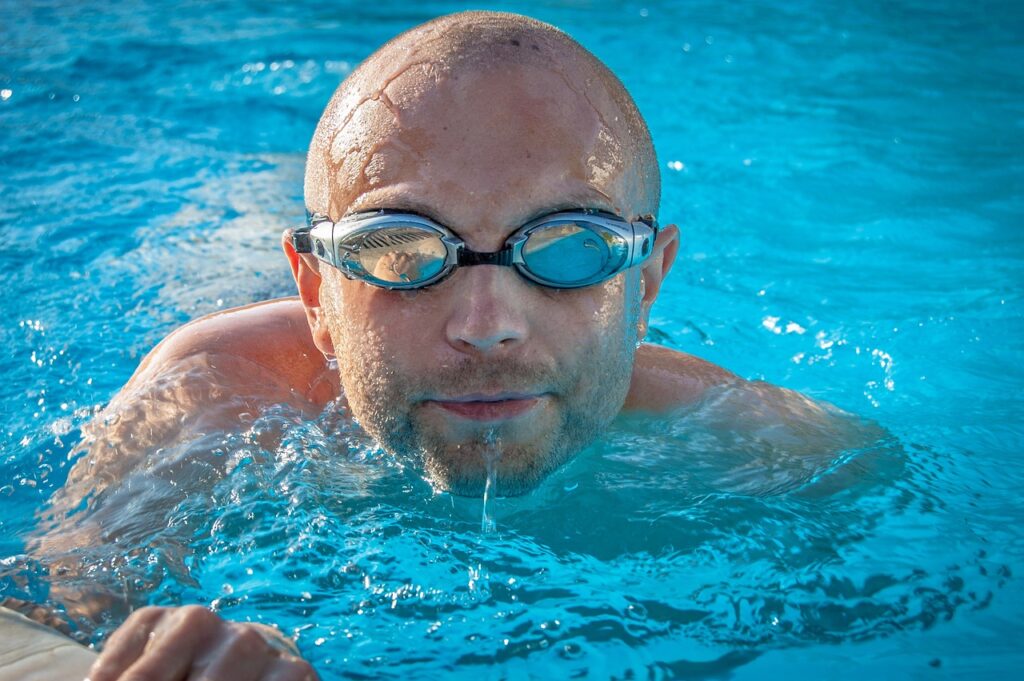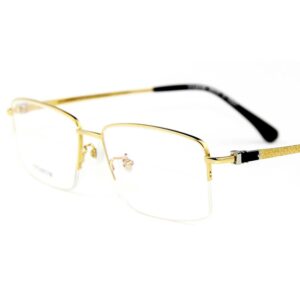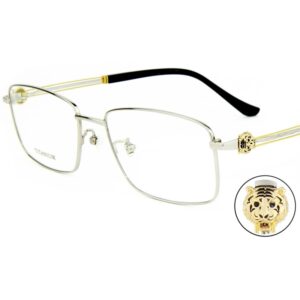Are you puzzled by the differences in acetate frame thickness when you shop for eyewear? One brand’s acetate frames feel lightweight and delicate, while another’s seem solid and robust. This inconsistency can be confusing, especially when trying to select the perfect pair that meets your needs.
Choosing the wrong thickness can lead to discomfort, durability issues, or even an eyewear style that doesn’t suit you. It’s frustrating when you invest in a pair of acetate glasses that are too thick, making them heavy and uncomfortable, or too thin, resulting in a fragile pair that breaks easily. Given the variety of eyewear options available, the pressure to choose correctly can be overwhelming.
Don’t worry. In this comprehensive guide, we’ll uncover the reasons behind these variations in acetate frame thickness across different eyewear brands. We will explore how design philosophy, market preferences, manufacturing techniques, material types, and even fashion trends contribute to the variations. By the end of this article, you’ll be equipped with all the knowledge you need to make an informed choice when selecting acetate eyewear.
Why Acetate Frame Thickness Varies Among Different Brands
Acetate frame thickness varies among different eyewear brands due to several factors, including design philosophy, target market preferences, manufacturing techniques, and the type of acetate material used. Brands aim to cater to diverse customer needs, which means they adjust the frame thickness to offer various levels of style, comfort, and durability. Understanding these aspects can help you select the ideal acetate eyewear for your requirements.
Now that you have a basic idea of why acetate frame thickness varies, let’s dive deeper into the multiple factors that contribute to these differences. We’ll examine each aspect in detail, helping you gain a complete understanding of what to look for when selecting the perfect acetate frames
How Does Brand Design Philosophy Influence Acetate Frame Thickness?
Every eyewear brand has a unique design philosophy that drives its product development. This philosophy encompasses the aesthetics, style, and overall impression that the brand wants to convey.
- Bold and Statement-Making Designs: Brands with a focus on bold and striking eyewear often opt for thicker acetate frames. Thicker frames allow these brands to create eyeglasses that stand out, making them an ideal choice for consumers who want their eyewear to be a prominent part of their fashion statement.
- Minimalist and Sleek Designs: On the other end of the spectrum, brands that emphasize minimalism and sophistication lean towards thinner frames. These frames offer a lightweight and subtle appearance, perfect for consumers who prefer understated elegance.
Example: Ray-Ban’s classic Wayfarer model has a thicker frame, representing durability and a bold style. This design philosophy aligns with the brand’s identity as a timeless, iconic choice. In contrast, Silhouette is known for its ultra-thin frames, which emphasize minimalism and sleekness, appealing to consumers who prefer a more subtle look.
How Does Target Market Preference Affect Frame Thickness?
Brands often tailor their products to meet the preferences of their target market, which plays a significant role in determining acetate frame thickness.
- Younger Demographic: Younger consumers tend to prefer trendy, lightweight, and slim frames that match their desire for modern and fashionable eyewear. As a result, brands targeting this audience produce thinner acetate frames.
- Older or Professional Demographic: Consumers in older age groups or those seeking professional eyewear often prioritize durability and classic styling. Therefore, brands targeting this segment may produce thicker frames that provide a more solid and reliable feel.
According to a 2020 eyewear market survey, about 65% of consumers aged 18-25 prefer thinner frames because they feel lighter and more comfortable. In contrast, 70% of consumers over the age of 45 opt for thicker frames, citing reasons like durability and a preference for classic designs.
The Impact of Different Manufacturing Techniques on Acetate Frame Thickness
The manufacturing process of acetate eyewear significantly influences the frame’s thickness. Understanding how different techniques affect thickness can help you appreciate why some brands offer thicker or thinner frames.
- Handcrafted Frames: Involves skilled artisans who manually cut, shape, and polish each frame. Handcrafting allows for more control over the thickness at every stage of production, enabling the creation of thicker frames that can have unique details, textures, and finishes. These frames often show slight variations in thickness, adding to their individuality and luxury appeal.
- Machine-Cut Frames: Use advanced machinery and computer-aided design (CAD) to cut acetate sheets with precision. This method allows manufacturers to produce frames with consistent thickness, often leading to more streamlined and thinner designs. Machine-cut frames are typically faster to produce, making them more cost-effective.
Comparison: Handcrafted frames from brands like Tom Ford or Lindberg showcase the benefits of meticulous craftsmanship, often resulting in acetate frames with variable thicknesses that emphasize durability and high quality. In contrast, machine-cut frames from brands like Zenni Optical are known for their consistency, affordability, and thinner profiles.
Manufacturing Process Stages Affecting Thickness:
- Cutting: Large sheets of acetate are cut into smaller pieces, known as blanks. The thickness of these blanks sets the foundation for the frame’s overall thickness. Handcrafted frames might use thicker blanks, while machine-cut frames often start with thinner sheets.
- Milling: The blanks are milled into the desired shape using either manual tools or automated machinery. This process refines the frame’s shape and thickness.
- Polishing: After milling, the frames are polished to smooth out rough edges. Hand polishing allows artisans to control and adjust the frame’s thickness more delicately, whereas machine polishing offers a uniform finish.
The choice of manufacturing technique directly impacts the acetate frame’s final thickness, contributing to the distinct differences in appearance and feel between handcrafted and machine-cut eyewear.
Understanding the Conventional Thickness of Acetate Sheets
When we talk about acetate frame thickness, it’s essential to recognize the standard thickness of the acetate sheets used in eyewear production. These sheets vary in thickness, typically ranging from 3mm to 8mm, with some specialty designs going beyond this range.
- 3mm to 4mm: This is the standard thickness for thinner, lightweight frames. These frames are delicate and offer a minimalist look, making them ideal for customers who want a subtle eyewear style.
- 5mm to 6mm: This range represents a moderate thickness often seen in classic, versatile designs. These frames balance durability and comfort, making them popular for everyday wear.
- 7mm to 8mm or More: These thicker sheets are used for statement frames designed to be bold and eye-catching. Frames made from this thickness are more durable but may feel heavier on the face.
Example: Independent eyewear brands that focus on bold designs often use acetate sheets 7mm or thicker to create frames that stand out. Meanwhile, brands aiming for lightweight, comfortable frames will opt for sheets in the 3mm to 4mm range.
How Does the Type of Acetate Material Impact Thickness?
Not all acetate is created equal, and the type of acetate used can influence frame thickness.
- Cellulose Acetate: This is the most common type of acetate used in eyewear. It’s known for its flexibility, strength, and lightweight properties. Depending on its quality, cellulose acetate frames can be made thinner or thicker while maintaining durability.
- Mazzucchelli Acetate: Mazzucchelli acetate is a premium-grade acetate originating from Italy, renowned for its exceptional quality. Frames made from this material can be thinner without compromising strength, giving eyewear brands the flexibility to offer a more refined product.
Example: Persol uses high-quality cellulose acetate or Mazzucchelli acetate, allowing them to produce thinner frames that remain durable. In contrast, lower-cost brands may use acetate blends that require thicker frames to achieve the same level of durability.
How Do Eyewear Trends and Fashion Influence Frame Thickness?
Trends in the fashion industry have a significant impact on the thickness of acetate frames.
- Chunky Frames Trend: In certain years, chunky and oversized frames become a popular fashion trend, prompting eyewear brands to produce thicker acetate frames to cater to this demand.
- Thin and Lightweight Trend: During other times, slim and barely-there frames become fashionable, pushing brands to design thinner frames.
Example: During the late 2010s, chunky frames became a fashion statement, with brands like Gucci leading the trend with thick, oversized acetate frames. This contrasted with the early 2000s, when rimless or thin frames dominated the market, exemplified by brands like Prada.
How Does the Brand’s Pricing Strategy Affect Acetate Frame Thickness?
Pricing strategies can also play a role in the thickness of acetate frames.
- Luxury Brands: These brands often use higher-quality acetate, allowing them to offer thicker frames that signify quality and durability, justifying a premium price.
- Budget Brands: Brands that target cost-conscious consumers may use thinner acetate to reduce material costs while still offering stylish eyewear.
Example: A luxury eyewear brand like Chanel offers thick acetate frames that reflect quality and craftsmanship, while more affordable brands like EyeBuyDirect might offer thinner frames to keep prices competitive.
How Does Acetate Frame Thickness Affect Eyewear Durability and Longevity?
The thickness of acetate frames directly influences the durability and lifespan of the eyewear.
- Thicker Frames: These frames are more resistant to bending and breaking, making them ideal for customers who need long-lasting eyewear.
- Thinner Frames: While thinner frames can be durable if made from high-quality acetate, they are generally more prone to wear and tear.
According to a study by the International Eyewear Association, thicker acetate frames have a 30% longer lifespan on average compared to thinner frames, highlighting the durability factor.
Conclusion
In summary, the thickness of acetate frames varies among eyewear brands due to factors such as design philosophy, target market preferences, manufacturing techniques, the quality of acetate material, and fashion trends. Understanding the manufacturing process and the conventional thicknesses of acetate sheets can help you make an informed decision when choosing the perfect eyewear.
By considering these factors, you can find acetate eyewear that not only matches your style but also meets your expectations for comfort and durability.
























